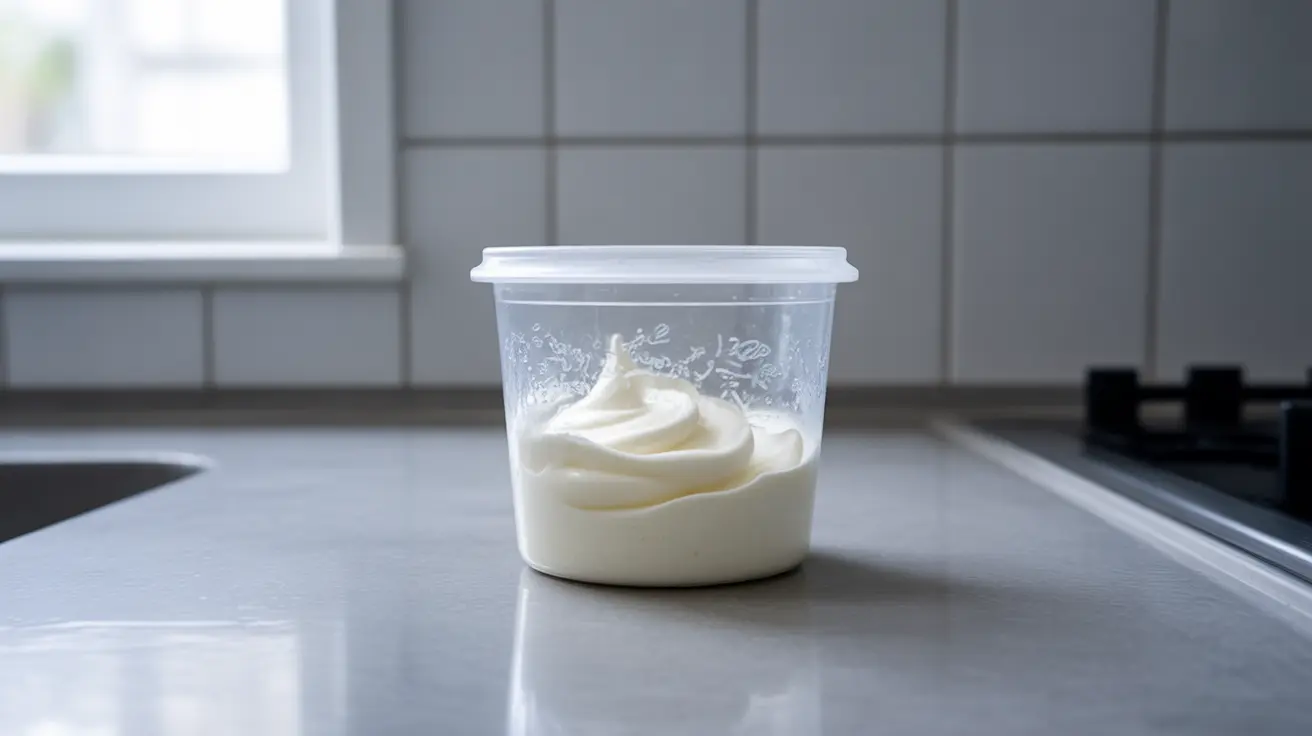Sour cream is a versatile dairy product that adds richness and tang to countless dishes, from baked potatoes to stroganoff. However, if you've ever found yourself with an extra container nearing its expiration date, you might wonder whether freezing is a viable option to extend its shelf life.
Understanding how to properly freeze and use sour cream can help reduce food waste while ensuring you always have this creamy ingredient on hand for your favorite recipes. While freezing sour cream is possible, there are important considerations regarding texture changes and best practices for achieving optimal results.
Understanding Sour Cream and Freezing
Sour cream is an emulsion of cream and lactic acid bacteria, which gives it its characteristic tangy flavor and thick consistency. The high fat content (typically 18-20%) and protein structure make it more susceptible to separation when frozen, unlike some other dairy products.
When you freeze sour cream, ice crystals form within the product, disrupting the smooth emulsion. This process affects the texture significantly, though the flavor and nutritional value remain largely intact. The extent of texture change depends on factors such as the original fat content, how quickly it's frozen, and storage conditions.
What Happens During the Freezing Process
During freezing, the water molecules in sour cream expand and form ice crystals. These crystals break down the delicate structure that keeps the cream smooth and uniform. As a result, when thawed, the sour cream often appears grainy, lumpy, or separated with visible liquid.
The separation occurs because the fat molecules and water components separate during the freezing and thawing process. While this change might make the thawed sour cream unsuitable for fresh applications like dolloping on nachos, it doesn't affect its safety or flavor profile significantly.
Safe Freezing Methods and Timeline
To freeze sour cream safely, transfer it to an airtight, freezer-safe container, leaving about half an inch of space at the top to allow for expansion. Label the container with the date and use within three months for best quality, though it can remain safe indefinitely when stored at 0°F or below.
For portion control, consider freezing sour cream in ice cube trays, then transferring the frozen cubes to freezer bags. This method allows you to thaw only what you need for specific recipes. Always ensure your freezer maintains a consistent temperature to prevent temperature fluctuations that could affect quality.
Best Uses for Previously Frozen Sour Cream
Cooking Applications
Previously frozen sour cream works exceptionally well in cooked dishes where texture changes won't be noticeable. Soups, casseroles, and sauces benefit from the tangy flavor without being affected by the altered consistency. The heat from cooking helps redistribute the separated components.
Baking Projects
Baked goods like muffins, cakes, and bread recipes accommodate frozen sour cream beautifully. The mixing and baking process naturally incorporates any texture changes, and the moisture content remains beneficial for achieving tender, moist results.
Marinades and Dressings
When blended with other ingredients, previously frozen sour cream can still create flavorful marinades and salad dressings. Use a whisk or blender to help re-emulsify the ingredients and achieve a smoother consistency.
Proper Thawing Techniques
The key to successfully using frozen sour cream lies in proper thawing methods. Always thaw sour cream in the refrigerator, allowing 8-12 hours for complete thawing depending on the container size. Never thaw at room temperature, as this can promote bacterial growth and compromise food safety.
Once thawed, gently stir the sour cream to redistribute any separated liquid. While it may not return to its original smooth texture, stirring helps minimize the grainy appearance and makes it more suitable for cooking applications.
Storage and Refreezing Guidelines
Once thawed, use sour cream within 3-4 days and store it in the refrigerator at or below 40°F. The quality continues to decline after thawing, so prompt use ensures the best flavor and texture for your recipes.
Refreezing previously frozen and thawed sour cream is not recommended. The additional freeze-thaw cycle further degrades the texture and increases the risk of bacterial growth. It's better to freeze sour cream in smaller portions initially to avoid waste.
Frequently Asked Questions
Can you freeze sour cream safely and is it still good to eat after thawing?
Yes, you can freeze sour cream safely, and it remains good to eat after thawing. While the texture will change significantly, becoming grainy or separated, the product is still safe for consumption and retains its nutritional value and tangy flavor. The key is using it in cooked dishes rather than fresh applications.
What happens to sour cream when you freeze and thaw it?
When sour cream is frozen and thawed, it undergoes textural changes due to ice crystal formation. The smooth emulsion breaks down, resulting in a grainy, lumpy, or separated appearance with visible liquid. The fat and water components separate, though the flavor remains largely unchanged.
How should you use frozen sour cream in recipes?
Use previously frozen sour cream in cooked applications like soups, casseroles, baked goods, sauces, and marinades. Avoid using it for fresh applications like dips or toppings where smooth texture is important. Stir well after thawing and incorporate into recipes that involve heat or blending.
Can you refreeze sour cream after it has been thawed?
No, you should not refreeze sour cream after it has been thawed. Refreezing further degrades the texture and increases food safety risks. Instead, use thawed sour cream within 3-4 days and freeze it in smaller portions initially to avoid the need for refreezing.
How long can you keep sour cream in the freezer and what is the best way to thaw it?
Sour cream can be kept in the freezer for up to three months for best quality, though it remains safe indefinitely at 0°F. The best thawing method is in the refrigerator for 8-12 hours. Never thaw at room temperature, and always stir gently after thawing to redistribute separated components.




